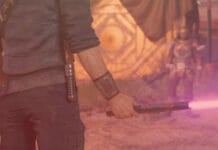Unlike most other Ubisoft franchises, Rainbow Six is quite an anomaly. The license has undergone countless changes over the years and has, perhaps, seen the most drastic of those changes being applied to its core gameplay – as is evident with Rainbow Six Siege. While Siege still preserves the pseudo-realistic feel of being on a team with elite soldiers, it largely did away with the planning, gearing, and military simulator emphasis previous games featured. Instead it now places an emphasis on team-based play with new 5v5 matchmaking. Now it seems the time has come for the franchise to evolve once more. Only this time, back in the opposite direction. Rainbow Six Extraction comes five years after Siege, and sees some of our favourite operators back for another romp through What If land. This time, however, the What If scenario is almost literally the name of the game.
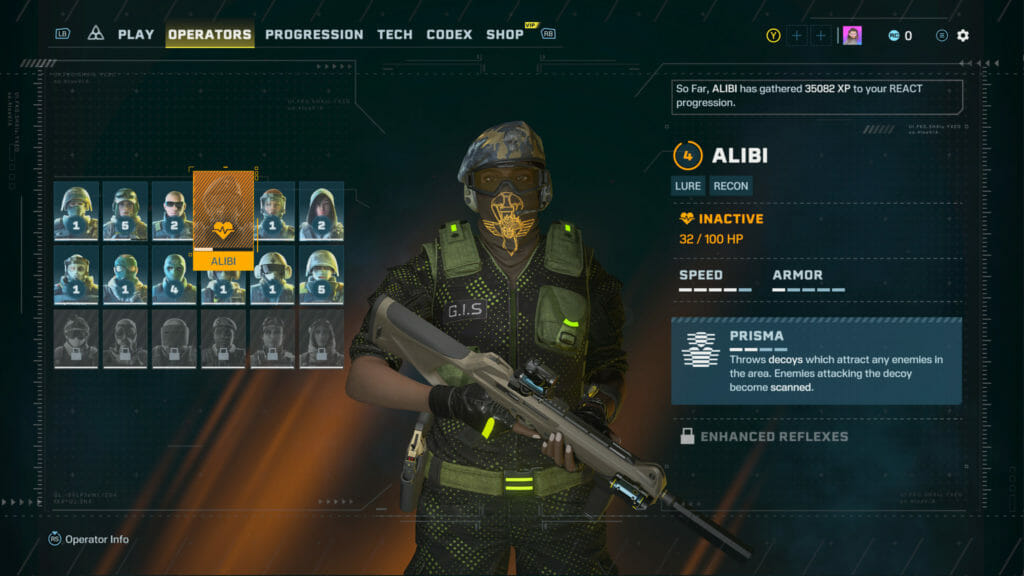
Set in an alternate time in the Rainbow Six Siege universe, Rainbow Six Extraction follows the exploits of the Rainbow Exogenous Analysis and Containment Team (REACT). They are a paramilitary group called in to deal with parasitic aliens called Archaeans. These aliens take over human hosts and integrate the bodies into their own army via a black, tar-like and goopy mess that spreads over everything it touches and slows down anyone trying to traverse over it.
Unlike Siege, where the only story available comes by way of individual operator lore, Rainbow Six Extraction features entirely new and rewritten narratives. Operators are now supported and backed by REACT, instead of whichever other military group they belonged to in Siege, and everyone seems to be working together as one wholesome, yet badass, group. Their mandate: to contain and assess exogenous threats to the known world, and study it for the advancement of science and the human race.
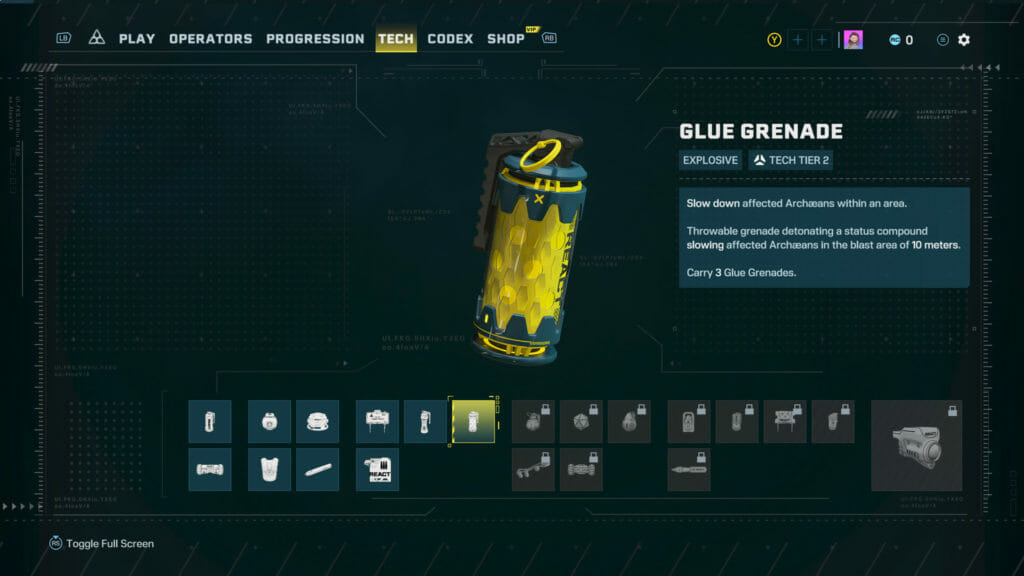
As Rainbow Six Extraction begins, it wastes no time with pleasantries, and instead loads directly into a cutscene depicting the alien spores hitting earth. It then shifts to Siege familiars Ash and Thermite as they bring together a few others to carry out the aforementioned mandate, and possibly put a stop to the mess. Before the game opens up, all players must start out by playing at least one of the virtual reality training levels. This much required scenario goes through the basics of being a REACT operator, and what the game is all about. Extraction may still have squad multiplayer elements, but it is not your mama’s Siege, and it makes that clear right out of the box.
There is now a much larger emphasis on stealth, which means totally reworked tools and in some cases brand new ones. All operators are equipped with new REACT blades, which are essentially combat knives with data-mining added into the mix – think Matrix-like pokers on the hilt. Players familiar with the run-and-gun gameplay of Siege will quickly realise how this is not the way Extraction is meant to be played. Whether through the three training missions, or the first few failed missions, the game requires an extraordinary amount of stealth compared to what the franchise has traditionally allowed. It is imperative for all involved players to work together and move slowly throughout each of the levels; or risk failure.
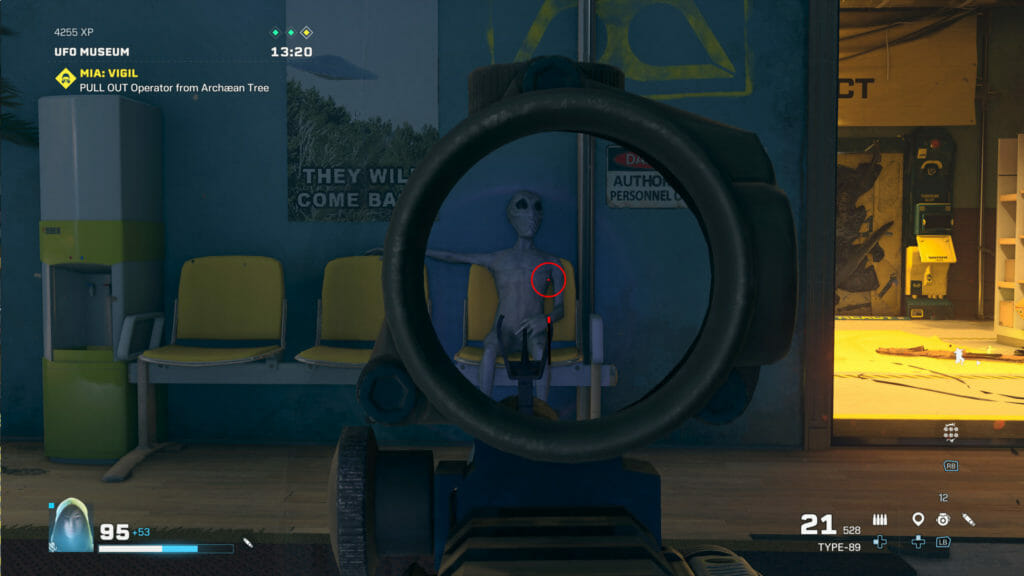
Beyond REACT blades, the game also features new “REACT Tech”, which is just a fancy name for utility items. The schtick, however, is that the very same utility items from Siege are back, but most of them have been changed to be more supportive than before. Stun grenades have been buffed and take out enemies much quicker, while operator abilities have been picked and pulled to make more sense in a Player Versus Environment way. Similarly, operator load-outs now involve building the optimal gun to successfully clear maps of goopey aliens and whatever horrors the parasite may bring; versus the traditional breach and attack players might be familiar with.
With that said, choosing your favourite operative and fiddling with their gear is still extremely familiar coming from Siege, but it quickly differs thereafter. Rainbow Six Extraction features two new tabs dedicated to unlocking new gear and technology. These advancement and progression tabs focus on new gear for operators to use in their incursions, and overall advancements to the team and story. In the progression tab, players can see an overview of what has already been unlocked. This includes new regions, some cosmetics, and additional operator cosmetics. The tech tab, on the other hand, gives players an overview of what new tech can be unlocked using REACT Tokens earned throughout the game. These are wonderful new additions to the franchise and much needed in many aspects. As fun as these new additions are, there is a caveat. The large and rather daunting progression meter, with its seemingly unending experience requirements, could be segmented better (perhaps via level openings) to allow for somewhat easier progression. Right now, the game relies on a lot of heavy grinding to make any sort of advancement.
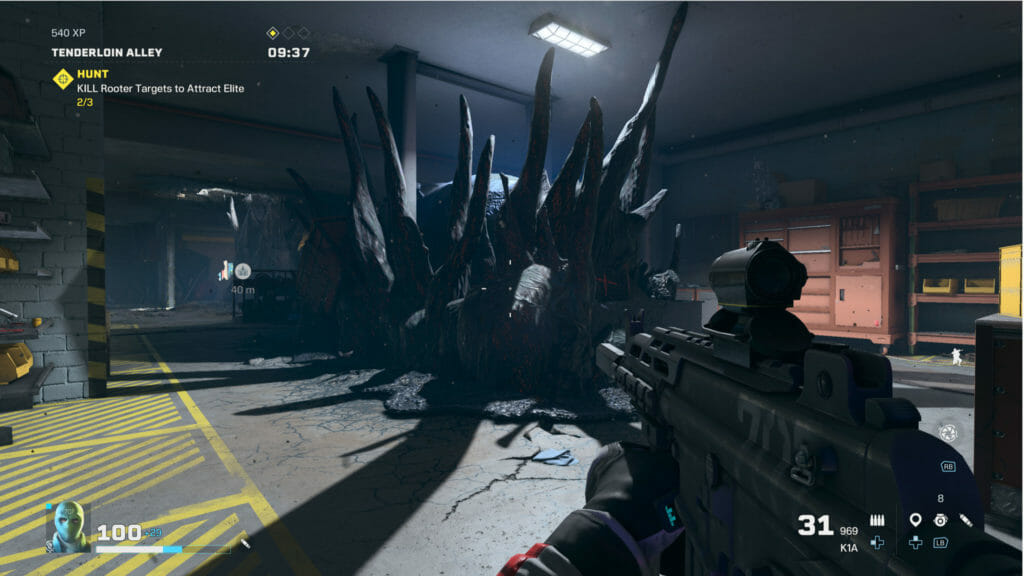
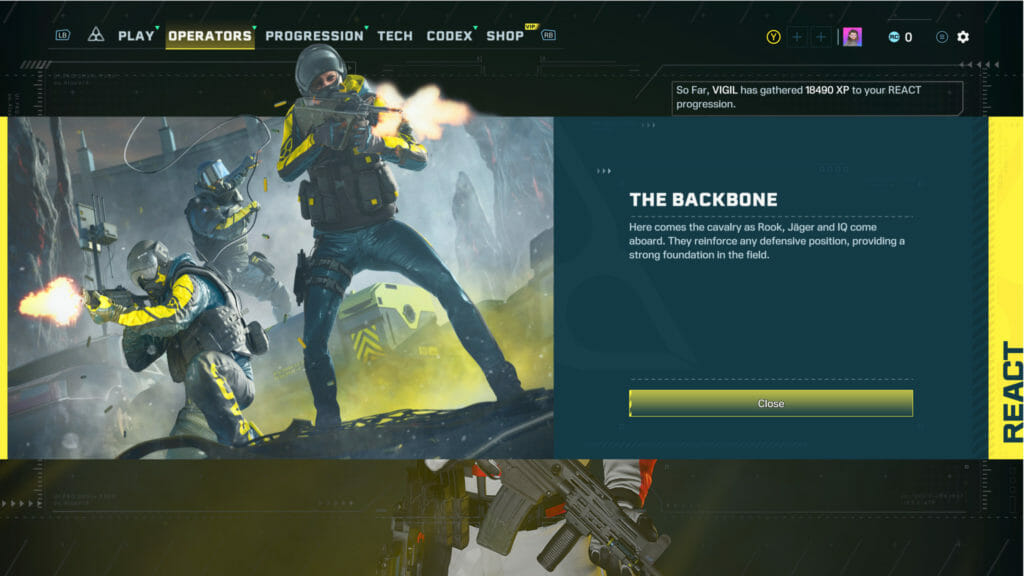
It goes without saying how Rainbow Six Extraction’s bread and butter lies within its incursions. These are three-part missions in major areas around larger zones, where each part has a unique objective to complete and get through. Players have immediate access to New York and its three smaller areas, all of which have been split into three sub-zones. In short, every incursion effectively takes place over three levels dictated by their area, and major zone. Typically, objectives include extracting an asset (similar to Siege’s hostage extraction), tagging Archaean nests using the REACT blade, elimination or capture of an elite target, carrying and/or defending bombs; and even scanning and defending areas. There are three main areas to be unlocked before milestones start unlocking events leading up to the endgame: Maelstrom (9-challenge raid) mode.
Once an objective goal has been met, players can move to the nearest airlock. Airlocks are effectively Left 4 Dead saferooms, which split one sub-zone off from another. Interestingly, objectives can either be failed or bypassed altogether simply by moving on through the airlock! In addition to airlocks, all sub-zones also feature extraction zones. These are used to extract assets, operatives, and to capture enemies. Extraction zones also serve the purpose of allowing squads to pull out of incursions if or when they feel overwhelmed. This can be done anytime in an incursion, whether halfway through the objective at hand, before, or after. When doing so, any experience accrued in the mission will be added to the progression pool. However, there are some unique caveats to the gameplay gamers should be aware of.
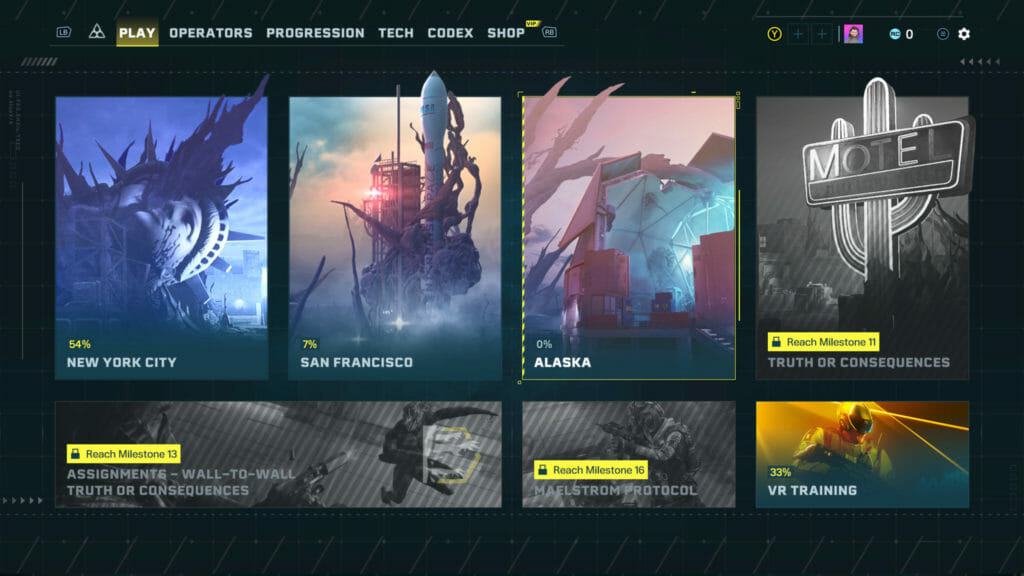
There are two main states of “death” in Rainbow Six Extraction. These are called Downed But Not Out (DBNO), and Knocked Out (KO). Operators who fall in battle will first enter the DBNO status, where they can crawl around and shoot baddies in the face with their sidearm. Friends can come and rescue any player in this state by resuscitating them and bringing them back into the fight. By default any second “death” will automatically result in a KO, taking operators out of the fight instantly. When this happens, friends can pick up a KO’d player’s body and carry it to an extraction zone. If an operator is not extracted before team members move on to the next sub-zone, or extract themselves, the operator in question automatically becomes Missing in Action (MIA) – a status that persists throughout the game. Until successfully rescued, operators who are MIA cannot be chosen for incursions and all experience accrued by those operators becomes frozen.
Becoming MIA is not the only persistent threat either. Damage is a very meta concept in Rainbow Six Extraction. Operators who extract with extremely low health will have to go into an extended healing period, making them inactive for future use. Inactive operators slowly regain their health based on how badly they were damaged before; rescued operators who were MIA before will take the longest to heal back to full health. This is a neat feature seen in games such as XCOM, where team composition is important and health status also persists. Damage and health status ensures players keep rotating through operatives in order to keep things fresh. It also helps how players may not choose to enter an incursion with the same operator as their friends.
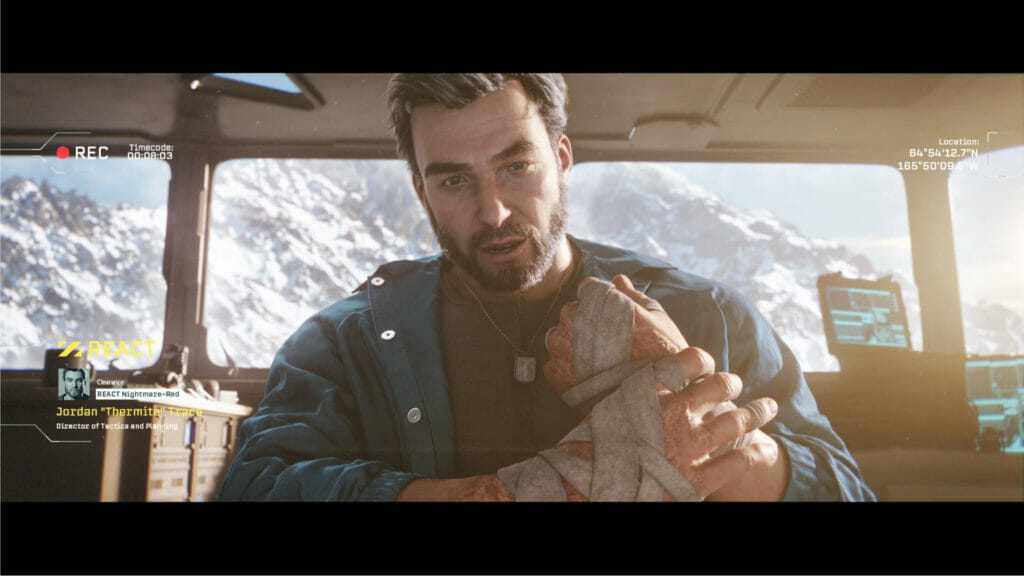
Multiplayer in Rainbow Six Extraction is as fun as ever, and the dynamic between team members is a wholly different feeling than in Siege. With the reworked operator abilities, up to three friends can work together to figure out the best team composition. A good Rook and Vigil combo, for instance, helps to keep Archaeans away from the team thanks to Vigil’s holograms. When they do break past, however, Rook’s plating serves as additional protection. Alternatively, squads can play with Ela and Sledge to keep elite Archaeans stunned, while operators like Gridlock can blast away with their huge gun. Even before launch, it must be said how servers were stable and teammates were hardly ever booted out of the game. The one time it did happen might have been an Xbox Quick Play anomaly (it is recommended not to start the game out of Quick Play anyway since it can mess with online game data). It goes without saying how having friends to pull your KO’d body out of the fight, particularly when you underperformed and could not headshot an enemy regardless of how easy the game made it for you, certainly helps (yeah, I may have left Hans Haupt; to fend for himself one too many times).
In this sense, team composition is an important aspect of Rainbow Six Extraction and perhaps also one of the best ways to play. However, the game can be played completely solo. Incursion difficulty can be set at any time before missions start, but one thing to take note of is how difficulty will dynamically scale depending on how many operators are entering an incursion. This means an incursion on Cautious (medium) difficulty will be a little bit more challenging when two or more squaddies join the fray. This is a very welcome feature, considering Extraction’s heavy focus on PvE content.
The only niggle here is how challenging it is to actually progress when there are more than two operatives in the squad. While Archaeans can easily be dispatched and meaneuvred around when solo or duo, the amount of spawned enemies skyrockets when launching into the same level [on the same difficulty] as a trio. Enemies become killing machines as they overwhelm the entire squad, and operators go MIA a lot more frequently, as a result. Perhaps a slight nerf to certain Archaeans (particularly Rooters and Smashers) might be needed as the title launches, particularly in terms of balancing trios. Otherwise the balancing is perfectly fine (as long as squaddies are willing to work together using stealth, above all else).
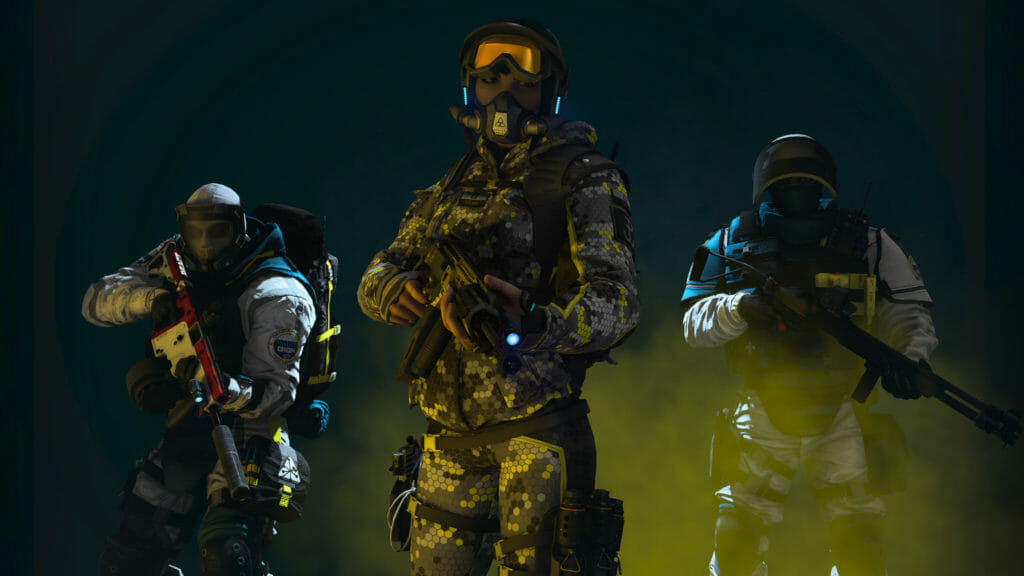
Complementing the gameplay are the visuals, and Rainbow Six Extraction does not disappoint. Colours are bold and contrast well with things that can be interacted with. Better still, and unlike Siege’s challenging menus, Extraction has a much simpler tab-based layout with clear distinctions between tabs. It is also extremely easy to tell different Archaeans and Protaens from one-another, even with their shared goopy aesthetic. Interface elements are also easily noticed even when players may not necessarily spot objectives at first glance. The game’s overall aesthetic is also extremely well done, with Ubisoft’s signature design and feel; characters look human, but not hyper realistic, and environments are beautifully crafted, but not entirely accurate. This is not WATCH_DOGS, after all, and that level of true-to-life accuracy is not needed. Instead, what players get is a neat foray into a realistic, but not too uncanny sweetspot. Loading times are also excellent (15 seconds or less on Xbox Series X), with the game running smoothly overall – which helps when the going gets tough and the tough get shooting.
Rainbow Six Extraction might share a name with Rainbow Six Siege, but it feels like a wholly different game and it is all the better for it. For all intents and purposes, the game acts as another “game mode” and an extension to Siege, but players most definitely do not need to own or know anything about the latter title to enjoy Extraction. There is something about team-based strategic titles with persisting status effects that simply just… works, and Ubisoft definitely nailed it with this one. Whether players want to shoot tar like aliens in the face, or have some PvE fun in the “Siege-verse”, Rainbow Six Extraction is definitely the game to play. It is, wholeheartedly, a good game, and will only get better as future balancing comes into play; more of those loveable operators from Siege enter the fray; and extra exciting challenges come into circulation.
Verdict:
GOOD
| PROS | CONS |
| Great multiplayer experience | Enemy damage and spawn rate need better balancing for full squads |
| Archaeans are a new and exciting addition to the franchise | Progression bar seems a bit confusing at first |
| Persistent damage works well within the Siege universe |
Title reviewed on Xbox Series X with code supplied by Ubisoft.
Review Methodology | Ethics Policy
Junior Editor at Vamers. From Superman to Ironman; Bill Rizer to Sam Fisher and everything in-between, Edward loves it all. He is a Bachelor of Arts student and English Major specialising in Language and Literature. He is an avid writer and casual social networker with a flare for all things tech related.








![Rainbow Six Siege Operation Deep Freeze [Hands On]](https://vamers.com/wp-content/uploads/2023/11/Vamers-Previews-Gaming-Operation-Deep-Freeze-03-218x150.jpg)


![Rainbow Six Siege Operation Heavy Mettle is Ram-tastic [Hands On]](https://vamers.com/wp-content/uploads/2023/08/Vamers-Gaming-R6S-Heavy-Mettle-01-218x150.jpg)




